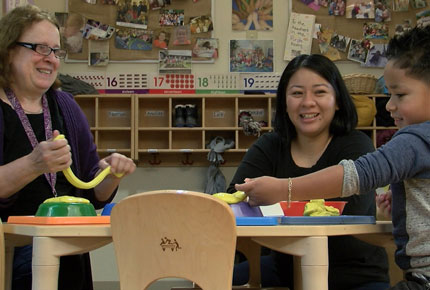Learning About a Child’s Family Culture
Download a printable version of this transcript in English or Spanish.
Dr. Tanya Moorehead, Professor of Special Education, Eastern Connecticut State University: I would encourage educators to not only ask parents about their children or their own personal family culture, but be willing and open to hear from them. Develop an environment, foster an environment where parents feel comfortable enough to share with you, because our children come from backgrounds that may or may not look like your own.
Let’s say the children in your classroom are from a different side of town from where you are, but you haven’t exposed yourself to that environment or that culture. I encourage teachers to go to the restaurants in that neighborhood, to go to the movie theatre or whatever it is in that area so that they can immerse themselves in someone else’s culture. And not always expecting the parents or the students to be immersed into our own culture, but just take the time to look to see what are the differences, what are the special things that make that child who he or she is.
I had a young child in my classroom, and she never made eye contact with me. And as a young teacher, I thought, “Wow, she’s not being very respectful. Look at me!” But I took a step back, and I looked at who she was, where did she come from, and what were the cultural practices within her family. And then I invited her mother in. It was at that point that I realized that she didn’t give her mother eye contact, and that was a cultural piece, because it was a sign of respect that she didn’t look her mother eye-to-eye. And here I am as the teacher, forcing her, “Look me in my eyes when you talk to me.”
So we need to find that balance between what are the expectations in the household, and what are the greater expectations within our school and in our society, and not try to change our students to have them belittle their own culture, but value both of them at the same time.



